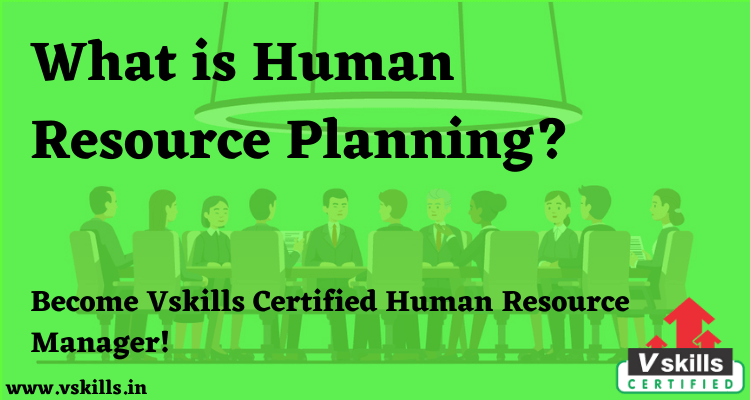In simple words, HR Planning is understood as the process of forecasting an organisation’s future human resource demand for, and supply to meet the objectives such as the right type of people in the right number. After this process, only the HRM department can initiate the recruitment and selection process. HRP is a sub-system in total organizational planning. Organizational planning includes managerial activities that set the company’s objectives for the future and determines appropriate means for achieving those objectives. HRP facilitates the realization of the company’s objectives for the future and determines appropriate means for achieving those objectives. HRP also facilitates the realization of the company’s objectives by providing the right type and the right number of personnel. HRP is variously called manpower planning, personnel planning or employment planning.
Human resource planning is the process by which an organization ensures that it has the right number and kind of people, at the right place, at the right time, capable of effectively and efficiently completing tasks that will help the organisation achieve its overall objective. Human resource planning then translates the organization’s objectives and plans into the number of workers needed to meet those objectives. Without clear cut planning, estimation of human resource need is reduced to mere guesswork.
Very briefly humans resource planning is the process of examining an organisations or individuals future human resource needs (for instance, what types of skills will be needed for jobs of the future) compared to future human resource capabilities (such as the types of skills employees or you already have) and developing human resource policies and practices to address potential problems for example, implementing training programmes to avoid skill deficiencies.
Features of HRP
The key features of Human Resource Planning (HRP) are:
- Systematic approach: HRP is a systematic approach that involves a series of steps, including analyzing the current workforce, forecasting future workforce needs, identifying gaps, and developing strategies to address those gaps.
- Long-term perspective: HRP takes a long-term perspective by forecasting the organization’s workforce needs for several years ahead, based on business goals and anticipated changes in the external environment.
- Integration with business strategy: HRP is closely linked to the organization’s business strategy. It aligns the workforce with the business goals to ensure that the organization has the right people with the right skills in the right positions to achieve its objectives.
- Flexibility: HRP must be flexible enough to accommodate changes in the external environment and changes in the organization’s business strategy. It should be able to adapt to changing circumstances and adjust workforce plans accordingly.
- Continuous process: HRP is a continuous process, not a one-time event. It involves regular reviews and updates to ensure that the organization’s workforce plans remain relevant and effective over time.
- Involvement of multiple stakeholders: HRP involves the participation of multiple stakeholders, including senior management, HR professionals, and line managers. It requires a collaborative effort to ensure that the organization has the right workforce to meet its objectives.
Practice Questions
Q1. What is the primary objective of Human Resource Planning?
A) To improve employee satisfaction
B) To forecast future workforce needs and design strategies to meet them
C) To increase employee productivity
D) To reduce employee turnover
Correct Answer: B) To forecast future workforce needs and design strategies to meet them
Q2. Which of the following is not a step in the Human Resource Planning process?
A) Analyzing current staff and skills
B) Identifying gaps in skills or staffing
C) Developing a recruitment strategy
D) Implementing employee training programs
Correct Answer: D) Implementing employee training programs
Q3. What is the first step in the Human Resource Planning process?
A) Analyzing current staff and skills
B) Identifying gaps in skills or staffing
C) Developing a recruitment strategy
D) Projecting future demand
Correct Answer: A) Analyzing current staff and skills
Q4. Which of the following is a benefit of Human Resource Planning?
A) Improved employee morale
B) Reduced turnover
C) Increased productivity
D) All of the above
Correct Answer: D) All of the above
Q5. Which of the following is a potential challenge of Human Resource Planning?
A) Difficulty predicting future demand
B) Limited availability of skilled workers
C) Resistance from employees to change
D) All of the above
Correct Answer: D) All of the above



